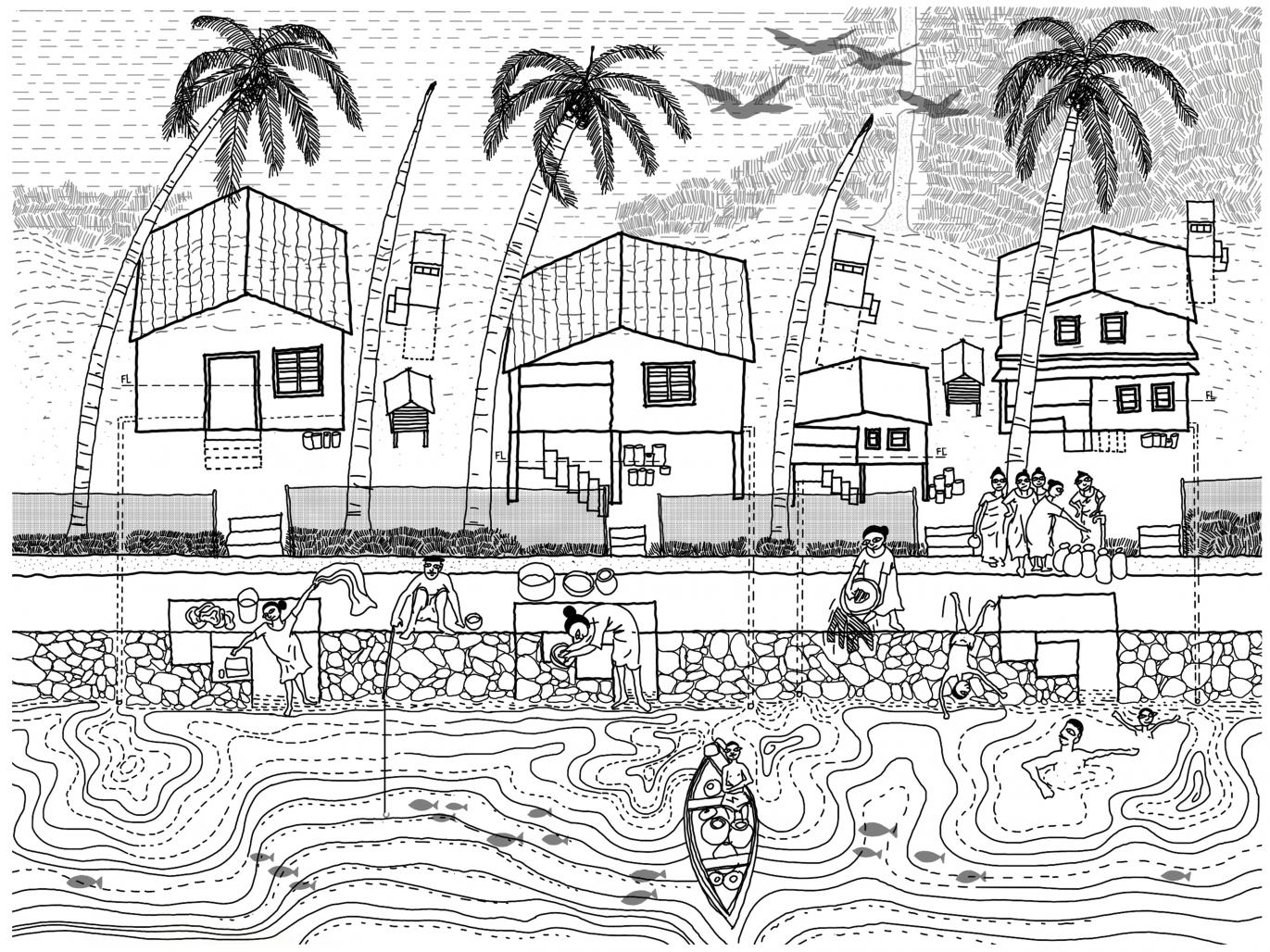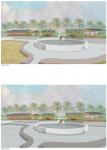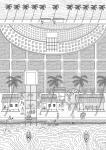Wetlands are defined as areas of land that are either temporarily or permanently covered by water that exhibit enormous diversity according to their genesis, geographical location, water regime and chemistry. These are ecologically sensitive and most threatened landforms. Wetlands regulate flooding and act as a natural sponge by storing excess water, absorbing toxic substances, thereby known to be the “kidneys of the earth”. Apart from many more ecological services they are also home to many species. But unscientific developments along these regions and rapid urbanization adversely affects the water quality and natural flow leading to the degradation of these zones. These ecological damages thereby affect the livelihood of people who depend on these landscapes. As the enormous economic value of these ecosystems are not well utilized they remain as wastelands. These water bodies had been drained for agriculture, fish farming, harbor development, urban development and industrial development. Thus wetlands have been termed a non – renewable natural resource that must be conserved at all costs.The project aims to regenerate critical wetlands to improve their ecosystem services, improve the livelihoods of vulnerable farming communities, diversify livelihood options, and increase resilience to climate shocks through improving beneficiaries' employability and adaptation skills, productive strategies through a mutualistic relationship between human and non-human agents, and awareness of the importance of protecting wetland ecosystems and the symbiotic relationship between humans and other living things. Rather than being limited to anthropocentric functions, architecture should expand into a regenerative, responsible, and resilient medium that is sensitive to the landscape and the agents within it and become a symbiotic agent for a range of life within the ecosystem.
2022
1. Amphibious Neighborhoods
People living in Kuttanad wetlands are mainly dependent on the paddy farming, inland fishing and tourism industry for their survival. This brought them to get settled around the paddy field bunds. Thus people in Kuttanad have got very close relations with water. Water is always there around them and every activity is related to water in some way. But generic built conditions in the sensitive landscape makes them vulnerable to damages. Houses get sinked into the ground and annual floods damage the property. So a resilient architectural typology that responds to the uncertain wetness is needed to ensure a safe and sustainable neighborhood.
2. Filter Apparatus
Even Though they live between water people don't have a proper source for safe drinking water. People serve their daily household activities in the lake water and they use the same water for drinking. Public taps are few and many get damaged during floods. People spend the majority of their time and money to buy water in cans and every household's surroundings are stacked with cans of water. Public taps become a social space where everyone gathers everyday. This scarcity of water becomes severe during floods. So a decentralized, low maintenance, nature based water filtration system is necessary in the neighborhood which will supply enough water for daily households and work during flood conditions too. This neighborhood apparatus metaphorically is a larger tap that supplies water as well as becomes a social space.
3. Filter Landscape
The major livelihood of people is agriculture. Kuttanad being the rice bowl of Kerala produces the majority of the rice. Excessive fertilizers and pesticides are used in the fields for improving the production and this damages the quality of soil, water and lives in it. Various species living in the ecosystem get affected by this and also affects the health of people who consume these as food. Along with a control in the pesticide use, a filtration process before the water gets pumped into the lake is necessary to reduce the ecological damage. A filtering wetland landscape along with activated carbon screens to absorb toxic contents in the water is made between the field and dewatering pump house. So the dewatering process should begin earlier as this filterion is a time consuming process. As these new landscapes become an ecological hotspot they will attract various species habitats into the region. These wetlands are major destinations of many migratory birds and this inturn has the potential to become a tourist attraction.
4. Inlet Sluice
The inlet sluices which open before every agricultural season to bring water into the field is spread all along the bund stretch in intervals. The number of sluice depends on the size of the paddy field. This agricultural infrastructure is reimagined into a combination of inlet canal and fish culturing ponds as there is a defined circulation of water. People can culture fishes in these ponds for the period between each agricultural season and thus the infrastructure gets more productive and value addition in the landscape.
5. Tourism amenities
Tourism is another major livelihood of people in Kuttanad. The Kuttanad backwaters and Vembanad lake are prominent tourist locations and Kuttanad is rich with its unique culture,lifestyle,and cuisines that attract tourists. This boost in the industry and degradation in the agriculture and fishing industry brings more people into the tourism sector. People work in houseboats, own smaller boats called Shikara boats, run small shops and homestays etc focusing the guests. Kuttanad being a collection of various padashekharams, this landscape is not well connected with the road network. Boats are the primary transport of the region and as a result boat jetties are another major space where people gather. As these are the major entry points into a place this has the potential to become a major tourism node in every padashekharams. Various tourism amenities run by the locals can enhance the economy and livelihood options of the people.
Designer: Adhithya Shine
Supervisor: Ar. Varun Gopal










